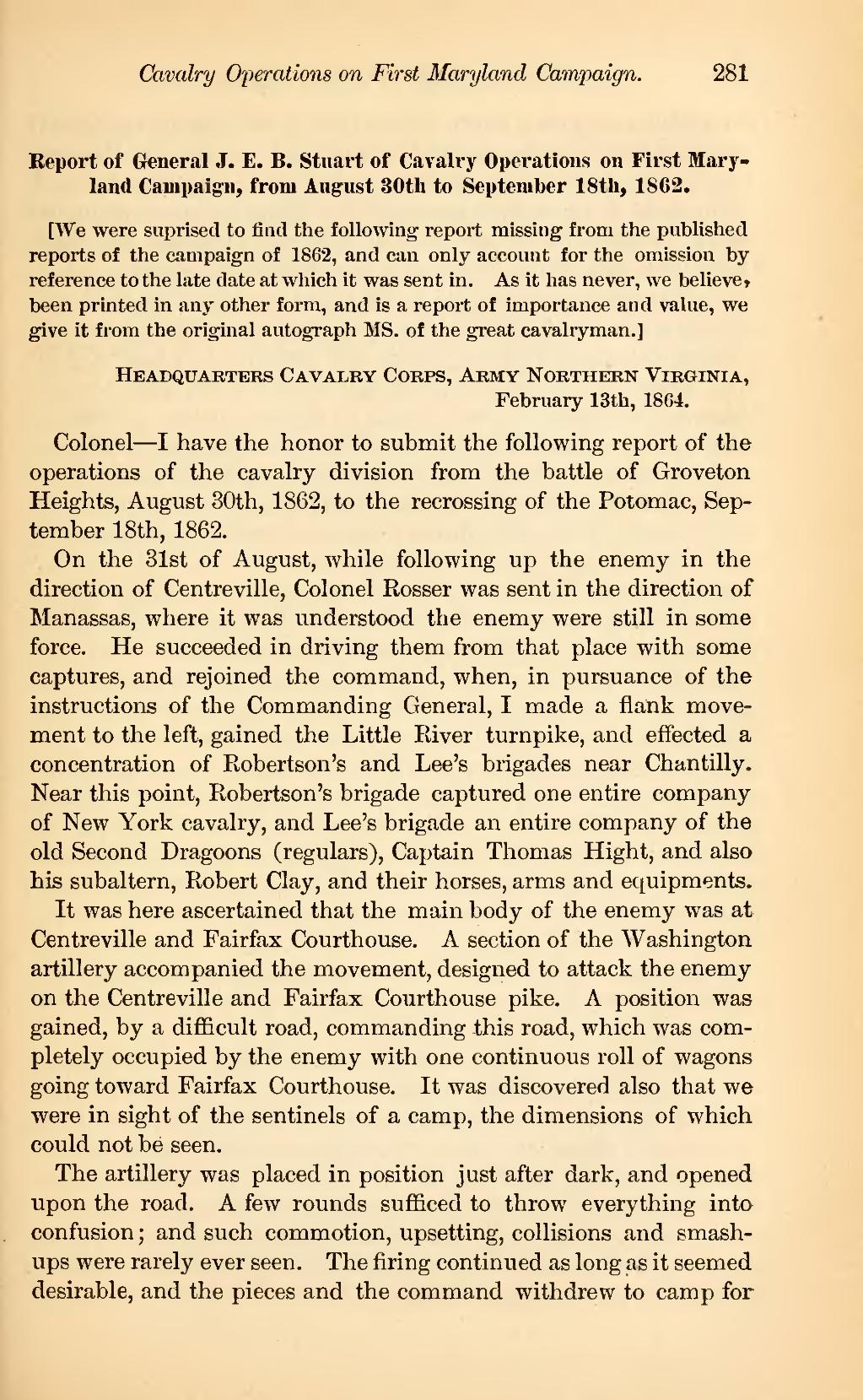Report of General J. E. B. Stuart of Cavalry Operations on First Maryland Campaign, from August 30th to September 18th, 1862.
[We were suprised to find the following report missing from the published reports of the campaign of 1862, and can only account for the omission by reference to the late date at which it was sent in. As it has never, we believe, been printed in any other form, and is a report of importance and value, we give it from the original autograph MS. of the great cavalryman.]
Headquarters Cavalry Corps, Army Northern Virginia,
February 13th, 1864.
Colonel—I have the honor to submit the following report of the operations of the cavalry division from the battle of Groveton Heights, August 30th, 1862, to the recrossing of the Potomac, September 18th, 1862.
On the 31st of August, while following up the enemy in the direction of Centreville, Colonel Rosser was sent in the direction of Manassas, where it was understood the enemy were still in some force. He succeeded in driving them from that place with some captures, and rejoined the command, when, in pursuance of the instructions of the Commanding General, I made a flank movement to the left, gained the Little River turnpike, and effected a concentration of Robertson's and Lee's brigades near Chantilly. Near this point, Robertson's brigade captured one entire company of New York cavalry, and Lee's brigade an entire company of the old Second Dragoons (regulars), Captain Thomas Hight, and also his subaltern, Robert Clay, and their horses, arms and equipments.
It was here ascertained that the main body of the enemy was at Centreville and Fairfax Courthouse. A section of the Washington artillery accompanied the movement, designed to attack the enemy on the Centreville and Fairfax Courthouse pike. A position was gained, by a difficult road, commanding this road, which was completely occupied by the enemy with one continuous roll of wagons going toward Fairfax Courthouse. It was discovered also that we were in sight of the sentinels of a camp, the dimensions of which could not be seen.
The artillery was placed in position just after dark, and opened upon the road. A few rounds sufficed to throw everything into confusion; and such commotion, upsetting, collisions and smash-ups were rarely ever seen. The firing continued as long as it seemed desirable, and the pieces and the command withdrew to camp for
